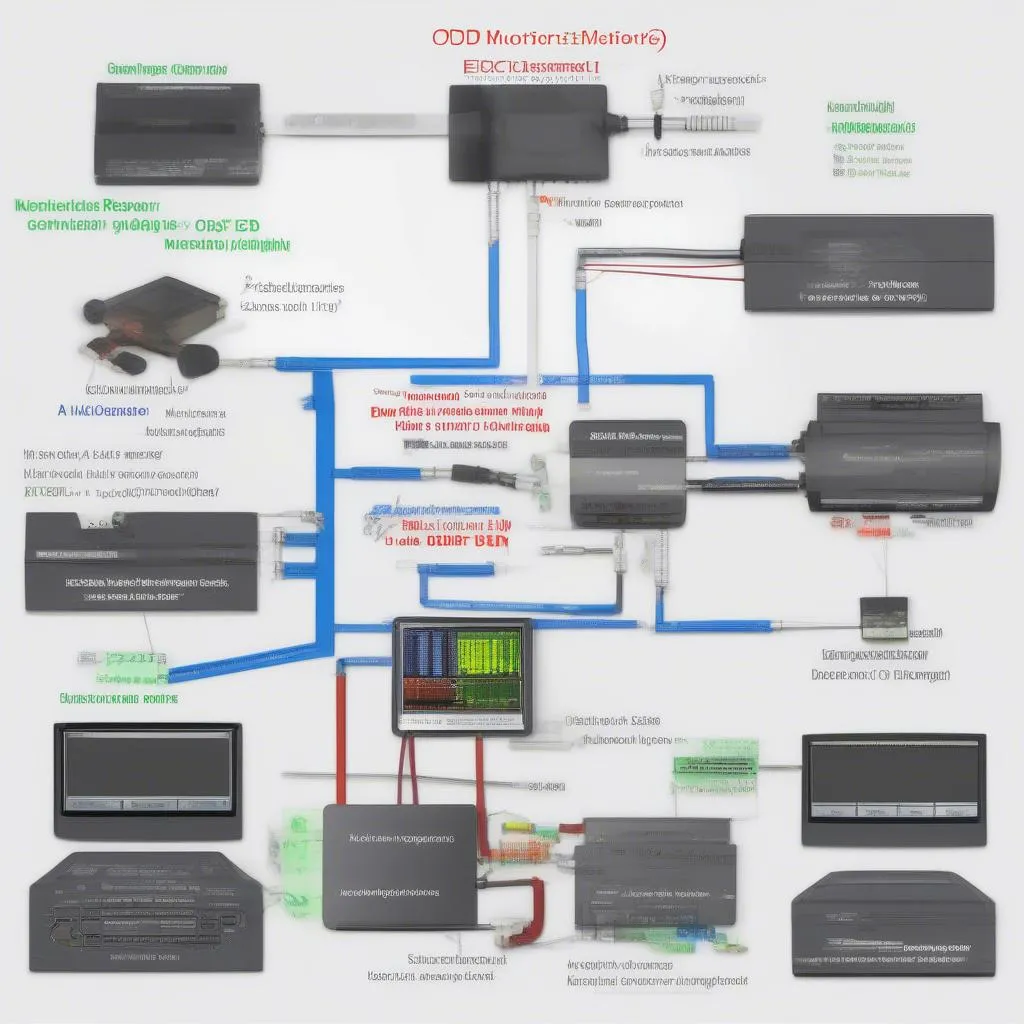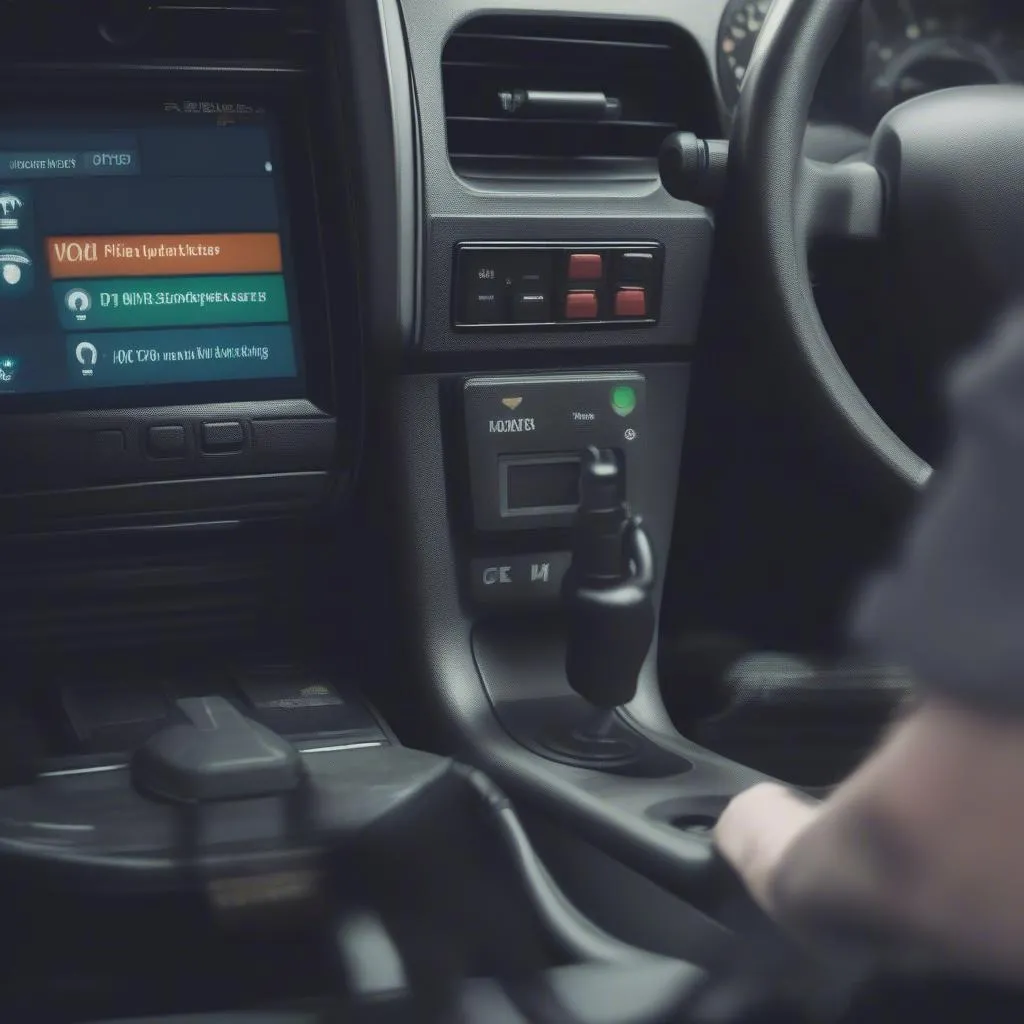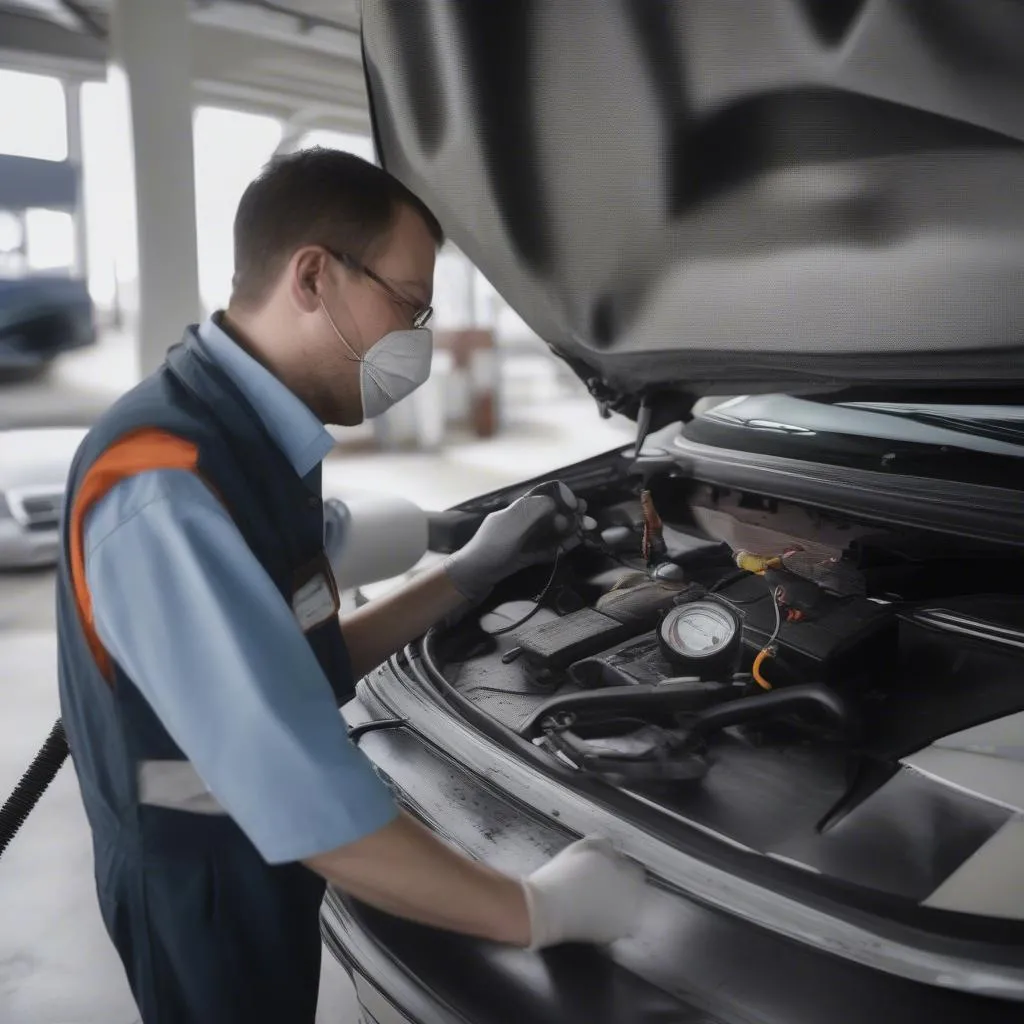Have you ever wondered why your car’s check engine light comes on? Or maybe you’ve been through a smog check and got a little nervous about the results. These are all things that relate to Obd Monitors, an important part of your vehicle’s emissions system.
What are Obd Monitors?
OBD stands for On-Board Diagnostics. In simple terms, it’s a system in your car that monitors various components that could potentially cause emissions issues. Think of it like a health check for your car’s emissions system. OBD monitors are designed to detect potential problems before they become major, and they play a crucial role in helping your car comply with emissions regulations.
Why Obd Monitors are Important
From a Mechanic’s Perspective
As an expert in automotive repair, particularly in European car diagnostics, I can tell you that OBD monitors are essential for diagnosing and troubleshooting a wide range of issues. The data collected by these monitors allows me to identify problems quickly and efficiently, saving time and money for both myself and the car owner. Imagine trying to diagnose a problem in a complex modern car without any diagnostic tools. It would be like trying to find a needle in a haystack.
From a Technical Perspective
OBD monitors work by continuously analyzing sensor data from various engine components, such as:
- Oxygen Sensors: These sensors measure the amount of oxygen in the exhaust gases, which helps determine the efficiency of the combustion process.
- Mass Air Flow Sensors: These sensors measure the amount of air entering the engine, which is crucial for calculating the correct fuel-to-air ratio.
- Engine Coolant Temperature Sensor: This sensor monitors the engine’s temperature and alerts the system if it’s too high or too low.
- Catalytic Converter: The OBD monitors ensure this vital component is functioning properly to convert harmful pollutants into less harmful emissions.
These sensors provide valuable data to the OBD system, which uses it to determine if any components are malfunctioning. If a problem is detected, the check engine light will illuminate on your dashboard, alerting you to the issue.
From a Financial Perspective
For car owners, OBD monitors play a crucial role in maintaining the value of their vehicle. By ensuring your car passes emissions testing, you’re helping to maintain its resale value. Additionally, early detection of potential issues can prevent costly repairs down the road.
OBD Monitor Readiness
Each OBD monitor has a “readiness” status. This means that the monitor needs to be completed (or “ready”) for the car to pass emissions testing. This often involves driving the car under various conditions to ensure the monitor has gathered enough data to accurately assess the component it’s monitoring.
Here’s how OBD readiness works:
- Not Ready: The monitor is not yet ready to provide accurate data.
- Ready: The monitor has gathered enough data to assess the component and report its status.
If a monitor is not ready, you’ll need to drive your car under specific conditions to “complete” the monitor. These conditions can vary depending on the vehicle make and model, but often involve driving the car at highway speeds, accelerating, and braking.
How to Check Your OBD Monitor Readiness
You can use a code reader or scan tool to check your OBD monitor readiness. A code reader is a handheld device that plugs into the OBD-II port in your car. This port is usually located under the dashboard, near the steering column.
Here are some popular code readers for checking OBD monitors:
- BlueDriver: A Bluetooth-enabled code reader that connects to your smartphone.
- ANCEL: A range of affordable code readers suitable for various car makes and models.
- OBDLink: A code reader with a variety of features and compatibility with different diagnostic software.
Once connected, you can access a wealth of information about your car, including:
- Diagnostic Trouble Codes (DTCs): These are codes that indicate a specific problem or malfunction in your car’s system.
- Live Data: You can view real-time sensor readings from various components in your car.
- OBD Monitor Readiness: This shows you the status of each monitor in your car.
Common OBD Monitor Issues
Here are some common issues related to OBD monitors:
- Incomplete Monitors: As mentioned earlier, some monitors require specific driving conditions to complete. If your monitor isn’t ready, you may need to drive your car under specific conditions to complete it.
- Stuck Monitors: Occasionally, a monitor can get stuck in “not ready” mode, even after driving under the required conditions. This can be caused by a variety of factors, such as a faulty sensor or a problem with the OBD system itself.
- Faulty Sensors: If a sensor is malfunctioning, it can trigger a check engine light and prevent certain monitors from completing.
For example, if your oxygen sensor is not working properly, the OBD monitor for that sensor will likely not be ready. This is because the system relies on accurate data from the sensor to make its assessment.
Addressing OBD Monitor Issues
If you’re experiencing problems with your OBD monitors, here are a few things you can try:
- Drive your car under specific conditions: As mentioned earlier, some monitors require specific driving conditions to complete. Try driving your car on the highway for a while, accelerating, and braking. This can help “complete” the monitor.
- Clear the trouble codes: If you have a check engine light on, clearing the codes may help to reset the monitor and allow it to complete.
- Check for faulty sensors: If you suspect a sensor is faulty, have it inspected and replaced if necessary.
- Consult a qualified mechanic: If you’re unsure about how to address OBD monitor issues, consult a qualified mechanic who has experience with diagnostics and repair.
Frequently Asked Questions
Q: Can I reset my OBD monitors myself?
A: You can reset some OBD monitors yourself using a code reader or scan tool. However, it’s important to note that resetting monitors does not fix any underlying problems. It simply clears the codes and allows the monitors to start the process over.
Q: How often should I check my OBD monitors?
A: It’s a good idea to check your OBD monitors regularly, especially before going for an emissions test. This will help you catch any potential problems early on and prevent costly repairs down the road.
Q: How can I learn more about OBD monitors?
A: You can find a wealth of information about OBD monitors online, in automotive repair manuals, and from qualified mechanics.
What Next?
We hope this guide has provided you with valuable insights into OBD monitors.
Remember: OBD monitors are an essential part of your car’s emissions system. By understanding how they work and addressing any issues promptly, you can help ensure your car runs smoothly and efficiently, while also protecting the environment.
 OBD Monitor System
OBD Monitor System
 OBD Code Reader
OBD Code Reader
 Emissions Testing
Emissions Testing
If you’re interested in learning more about OBD monitors or need help diagnosing and repairing any issues, please don’t hesitate to contact us. We offer expert advice and support 24/7. You can reach us via WhatsApp at +84767531508.
This is just a small taste of the information you can find on our website. For more detailed information about OBD monitors, including specific instructions for different car models and resources for learning more, check out these articles:
- How to reset OBD monitors on a GMC Jimmy
- How do I check my OBD readiness?
- 2007 Sprinter OBD monitors disabled
- 2011 Ford Focus OBD monitors
- California smog test and OBD monitors
We encourage you to explore our website and discover more about car maintenance and repair. You can also leave a comment below to share your thoughts and experiences.